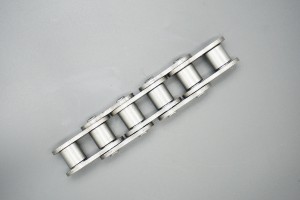Roller chains are an important component in a variety of industrial and mechanical applications, serving as a reliable means of transmitting power from one place to another. From bicycles to conveyor systems, roller chains play a vital role in ensuring smooth and efficient operation. However, the production of roller chains involves several complex steps that are critical to creating a high-quality and durable product. In this blog, we take a deep dive into the production of roller chains, exploring the journey from raw materials to finished product.
1. Raw material selection:
The production of roller chains begins with the careful selection of raw materials. High-quality steel is the primary material for roller chain manufacturing due to its strength, durability and wear resistance. The steel undergoes rigorous testing to ensure it meets the required standards for tensile strength and hardness. In addition, the raw material selection process also needs to consider factors such as corrosion resistance and the ability to withstand varying operating conditions.
2. Forming and cutting:
Once the raw materials are selected, they go through a forming and cutting process that shapes them into the required roller chain components. This involves precision cutting and forming techniques to manufacture inner and outer links, pins, rollers and bushings. Advanced machinery and tools are used to ensure component accuracy and consistency, which is critical to the proper operation of the roller chain.
3. Heat treatment:
After the parts are formed and cut, they go through a critical stage called heat treatment. The process involves controlled heating and cooling cycles of steel components to enhance their mechanical properties. Heat treatment helps increase the hardness, strength and wear resistance of the steel, ensuring that the roller chain can withstand the harsh conditions encountered during operation.
4. Assembly:
Once the individual components have been heat treated, they can be assembled into a complete roller chain. The assembly process requires precision and attention to detail to ensure each component fits together seamlessly. Pins are inserted into the inner link plate, and rollers and bushings are added to form the unique structure of the roller chain. Advanced mechanical and automated assembly processes are often used to maintain consistency and efficiency in the assembly stages.
5. Lubrication and surface treatment:
After the roller chain is assembled, it is lubricated and surface treated to further improve its performance and life. Lubrication is essential to reduce friction and wear between the moving parts of a roller chain and ensure smooth operation. Additionally, surface treatments such as plating or coatings can be applied to provide corrosion resistance and improve the aesthetic appearance of the roller chain.
6. Quality control and testing:
Before roller chains are ready for distribution, they undergo strict quality control and testing procedures to ensure they meet the required standards. This includes inspecting the dimensions, tolerances and surface finish of the roller chain, as well as conducting tests to evaluate its tensile strength, fatigue resistance and overall performance. Any non-conforming products are identified and corrected to maintain the high quality of the roller chain.
7. Packaging and delivery:
Once the roller chains pass the quality control and testing stages, they are packaged and ready for distribution to customers. Proper packaging is essential to protect roller chains during transportation and storage, ensuring they reach the end user in optimal condition. Whether in industrial machinery, agricultural equipment or automotive applications, roller chains are found in various fields and play a vital role in powering basic operations.
To sum up, the production of roller chains involves a series of intricate and essential production links, from the selection of raw materials to final packaging and distribution. Every stage of the production process is critical to ensuring the quality, durability and performance of your roller chain. By understanding the entire process of roller chain from raw material to finished product, we gain a deeper understanding of the precision and expertise involved in creating this fundamental component of countless mechanical systems.
Post time: Mar-13-2024

